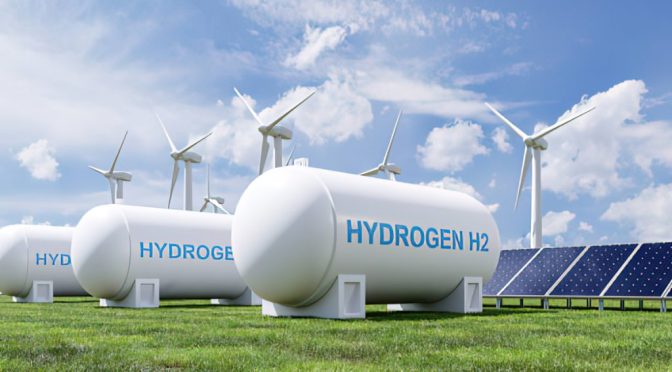Considered “the fuel of the future”, “green hydrogen” may have, in Brazil, one of its great players (a reference in a certain segment). It is not yet possible to estimate how much this commodity could add to the country’s economy. According to specialists, the good conditions in Brazil for the production of this type of energy are already taken for granted, which is increasingly attracting the interest of other countries.
Interest in this fuel -whose main characteristic is a production process that is not harmful to the environment- has increased due to the energy security risk that the European continent faces in the current war scenario, since most of its countries depend of the gas exported by Russia.
To have the “green” seal, it is essential that hydrogen is produced and transported without the use of fossil fuels or other processes harmful to the environment. Its production requires the use of a lot of energy, especially to eliminate, by hydrolysis, the hydrogen found in the water.
renewable resources
The term green hydrogen occurs when the electricity used in the electrolysis of water comes from renewable energy sources such as wind, photovoltaic and hydroelectric, explains the director of Hydrogen Technology of the Brazilian Association of Energy from Waste and Hydrogen, Ricardo José Ferracin, who is also an associate professor at the Universidade Oeste do Paraná, in addition to being one of those responsible for the implementation of the Hydrogen Research Center at the Itaipu Plant.
According to the executive superintendent of the Brazilian Hydrogen Association (ABH2), Gabriel Lassery, green (or renewable) hydrogen can also be obtained from hydroelectricity and residual biomass.
“Given the agricultural power that the country has, there is a lot of availability of tailings biomass for hydrogen production. Brazil also has places where it is possible to find natural hydrogen waiting to be extracted”, he says.
Market
Lassery recalls that gas is already widely used for industrial purposes in Brazil, mainly in oil refining and fertilizer production.
“The expansion of this economy will develop other possibilities in the internal market. Some examples are in mobility, for power generation on board electrified vehicles; in the steel industry, to reduce emissions in steel production; and in energy production, to mitigate disruptions in the area of ??renewable energy,” he says.
On the international scene, he adds, the hydrogen market has been structured “by leaps and bounds”. “The countries with the least availability of renewable energy aim to import renewable and low-carbon hydrogen from the producing countries, to decarbonize their matrices. New initiatives to structure these agreements are frequently discussed.”
According to Ricardo Ferracin, the installed generation capacity in the country is around 180 GW with only the projects under analysis, but this capacity can be doubled, giving Brazil a leading role in the sector.
“Obviously there are technological and investment bottlenecks that need to be carefully analyzed, but positive expectations are high,” he says, citing as an example of a bottleneck the fact that the country does not manufacture electrolyzers and fuel cells. “It is necessary to develop the production chain of the equipment and it is necessary to train human resources, especially technicians.”
Lassery also says that, currently, most of the hydrogen produced in Brazil is produced captively (in the place where it will be consumed) and that its energy sources, in general, are not renewable.
“However, Brazil has immense potential for the production of renewable hydrogen. In various parts of the territory, its potential for the production of solar and wind energy is among the largest in the world, and new projects and memorandums of understanding for the production of wind and solar energy, both offshore sea] and on land [on the continent] with the aim of producing hydrogen,” he adds.
Transportation
The experts explain that, to guarantee the green seal of hydrogen, it is also essential that it is not transported in vehicles that use fossil fuels. According to Lassery, all stages of the hydrogen production and transport process must use exclusively renewable energies.
“As hydrogen is already being produced and transported today, ways to handle it safely are known. However, new regulations, codes, and standards are created and revised as technology develops,” he says.
According to Ferracin, green hydrogen can be transported at high pressures, inside cylinders, and liquid, at high pressures and low temperatures.


